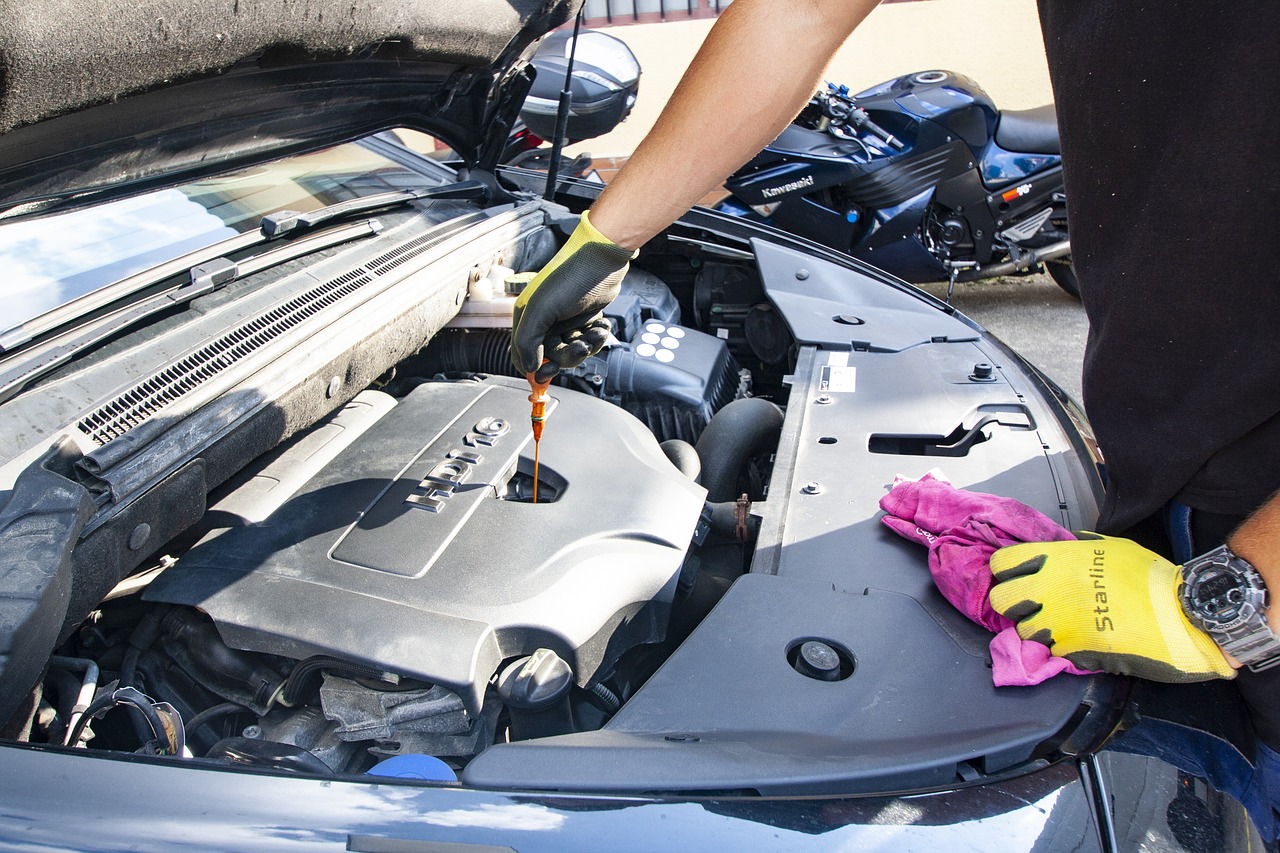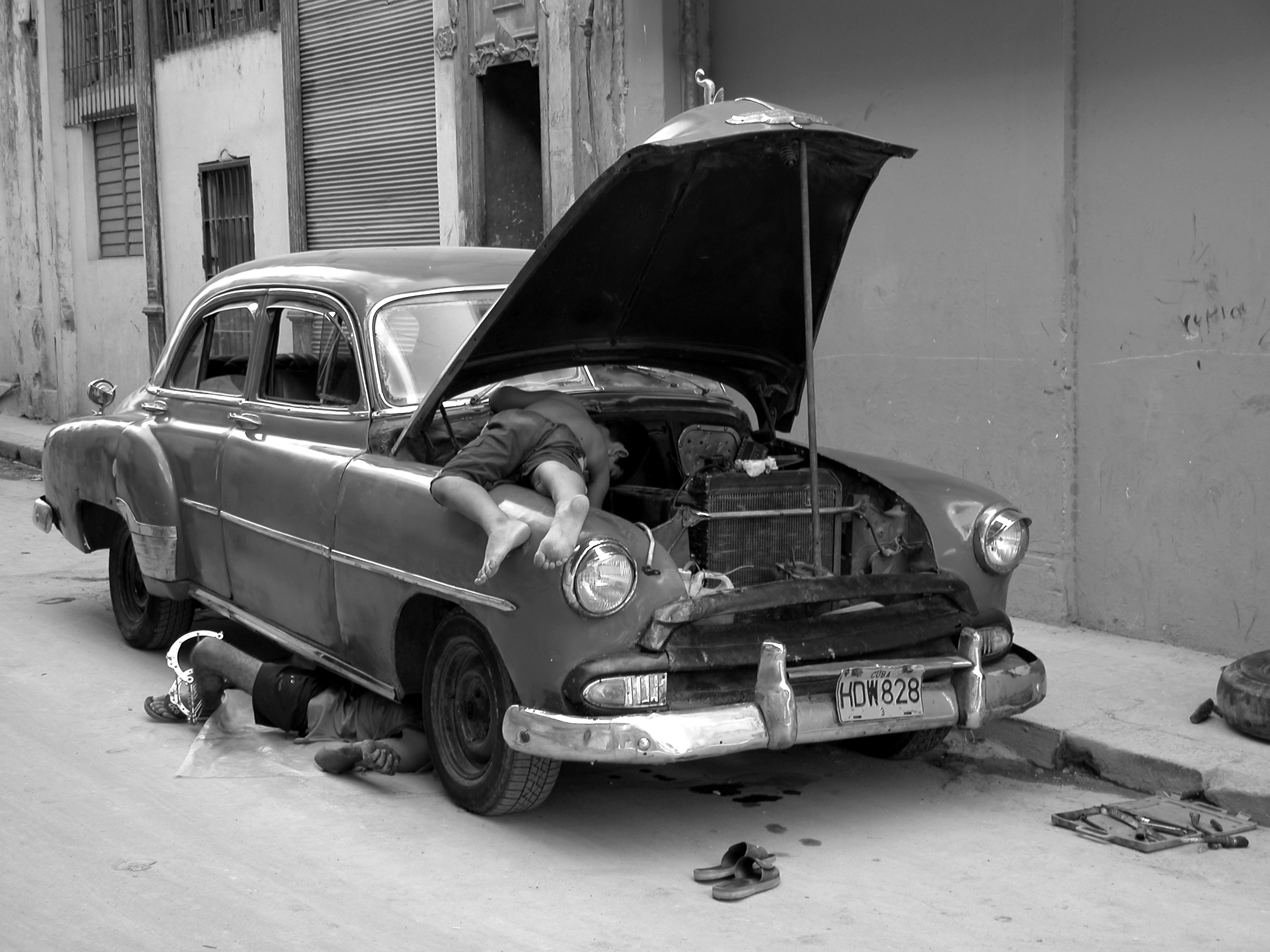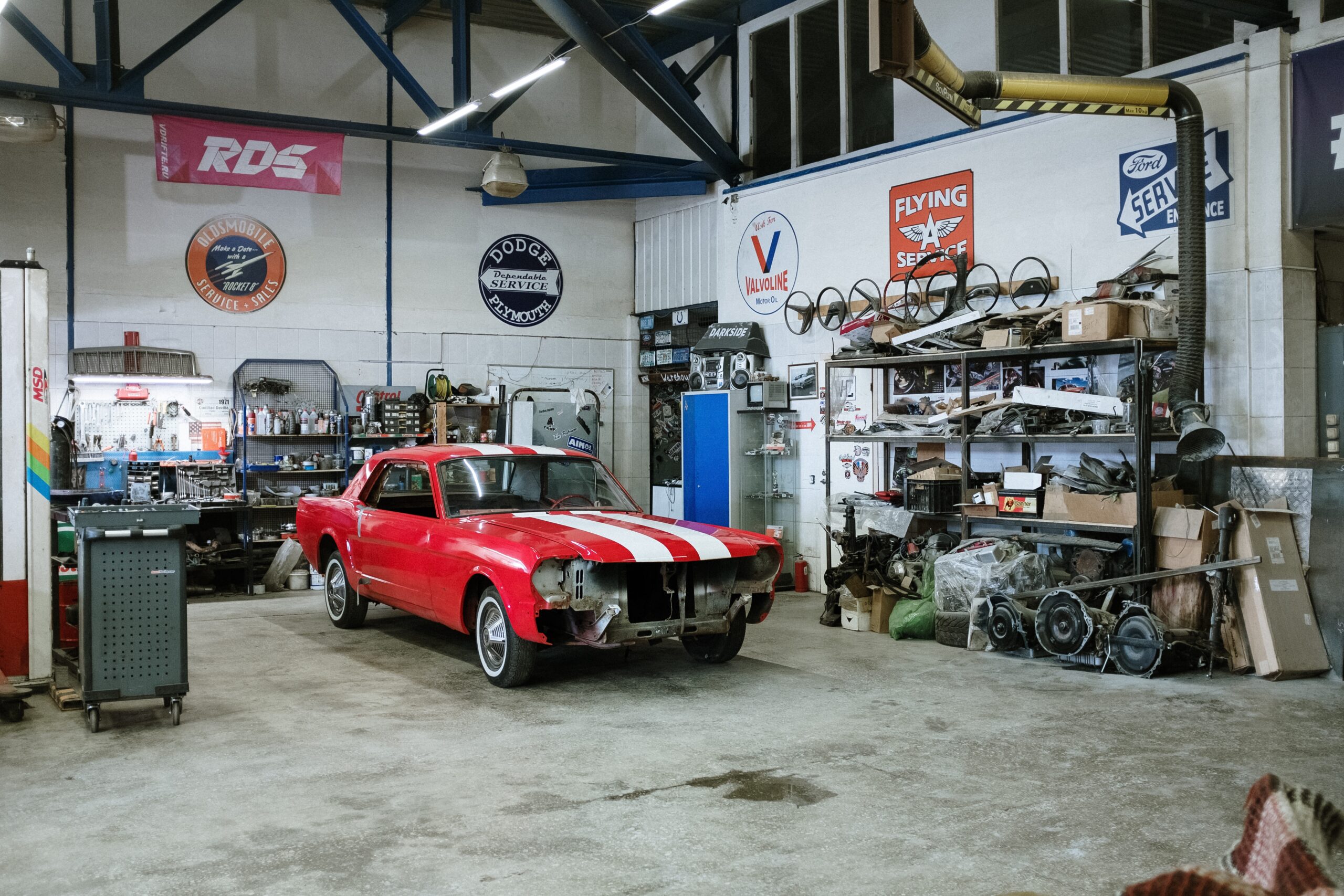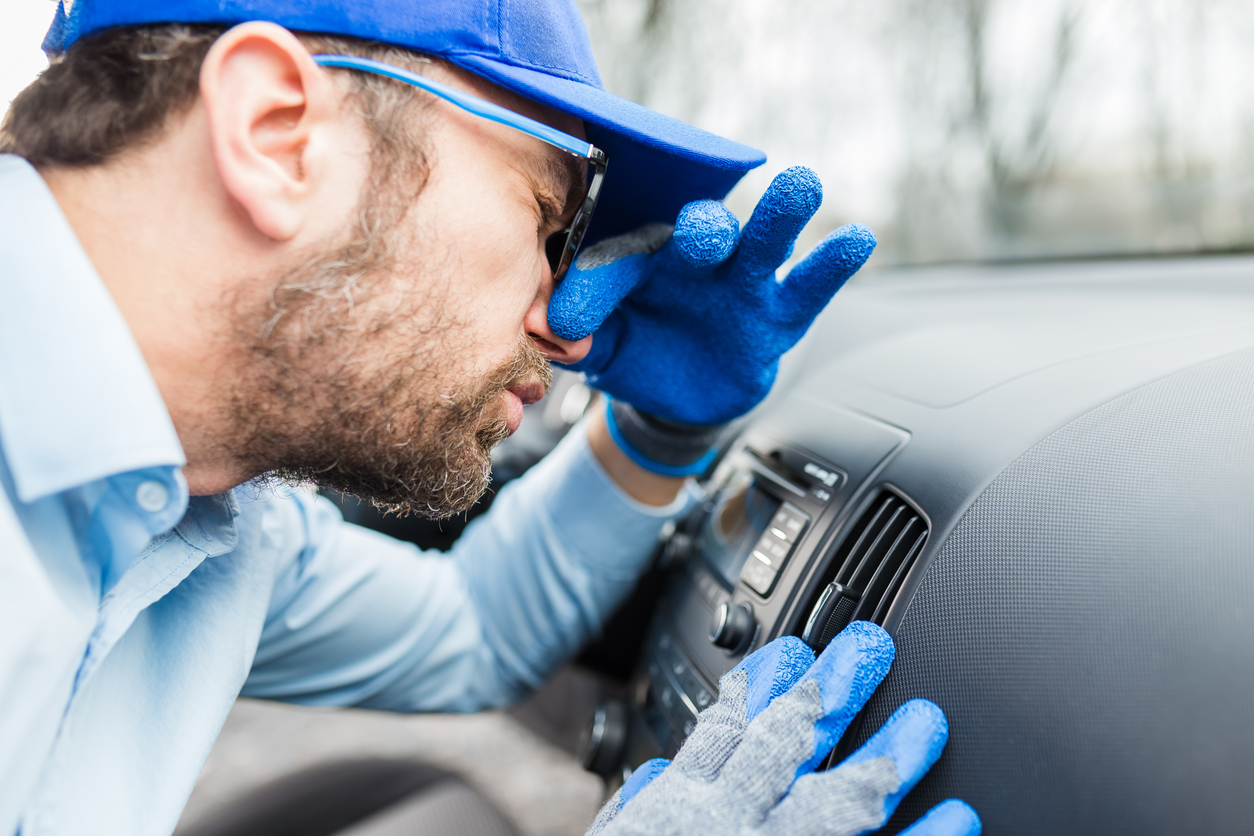DIY Car Maintenance and Repair Tasks

Regular car maintenance is critical to keeping your vehicle in good condition and running smoothly. It can also save you money in the long run by preventing more expensive repairs. Besides that, well-maintained vehicles have the least chance of leaving you stranded by the roadside. You surely don’t wish to experience such on a rainy Sunday evening.
However, many people don’t know how to do even the most basic car repairs or are scared of working on their car. This guide will teach you some common DIY car maintenance and repair tasks to keep your car in good condition without spending a fortune at the auto-body shop near you.
You don’t need specialized tools or equipment to do DIY car maintenance tasks. Generally, the tools that came with your car are enough for basic tasks like changing a flat tire and other emergencies when they arise! If it’s more of routine, then buy them individually- but buy good quality items from reputable brands such as Autoparts-24.com.
Read more: Starting problems? Top 9 reasons why your car does not start
DIY car maintenance tasks:
Changing the engine coolant
The vehicle coolant is the liquid that prevents your car from overheating and or freezing. However, it does not last for long. It needs constant replacement. On average, you require to change the coolant every 25,000 miles. Alternatively, it should be changed after every five oil changes.
You do not need to be a professional mechanic to do this. All you will need is an air compressor, a socket, hose, wrench, and a 4-in-1 screwdriver. Before changing the old coolant, ensure that the engine is cool and check on the coolant levels. Always ensure that the coolant and brake fluid are clean.
Replacing the filters
Air filters keep your car running smoothly. The filters improve the heat in the vehicle and ensure that the air conditioning is working properly. Ideally, the filter should not be discolored and full of debris. However, if you notice that they are dirty or clogged, it is time to replace them.
Replacing them is easy and should not take up much time. All you need to do is unscrew the cap covering the filter, take the old one out and slide in the new one. Additionally, you may check the car’s manual for guidelines. If the air conditioning is still not working properly, there might be a problem with the serpentine belt.
Changing the engine oil
An oil change is among the simplest DIY car maintenance tasks every driver should know about. Changing the oil should be done after every 3,000 to 5,000 miles or after every three months. Regardless of how often you drive, you should change the oil often. It is an easy routine that can be done in about 40 minutes. Before you start, ensure that the engine is cool. To change the oil, place your car on jack stands and locate the oil drain plug under the vehicle. Place the drain pan below to catch the oil and remove the plug. Drain out the old oil.
The last step should be replacing your oil filter using an oil filter wrench if you cannot loosen it by hand. Remember to place the oil drain pan directly underneath the oil filter to catch any oil that drains. Remove the old oil filter and then clean the mounting surface on the engine with a rug.
Now, lightly coat the new oil filter rubber seal with fresh oil. When done, screw the new filter by hand and ensure the seal is properly seated in the filter. Using a funnel, pour in the type of oil for your car. Before you smile or clap your hands, run the engine and look on the area around the oil drain plug for leaks. Lastly, check your oil level using a dipstick to ensure you have added adequate oil.
Cleaning the headlights
Dirty headlights can make driving in the dark harder and riskier. It is important to remain safe, and cleaning the headlights is part of the safety routine. Cleaning the headlights is an easy DIY car repair task. For this routine, you can use toothpaste to clean the glass, which will, in turn, save you a lot of trouble. It leaves the headlights brighter.
Fix the defroster grid
Have you noticed some broken grid segments at the back windshield while driving? If you have, then your defroster grid needs repair. The lines are small wires that heat up when you activate the grid to assist you in keeping the windshield clear. However, at times they malfunction or may even stop working.
Fixing the defroster grid is, nonetheless, a small DIY car repair task. All you need is a defroster grid repair kit. Start by washing the windows and spotting any breaks in the grid. Proceed to paint the breaks with some conductive paint and let it dry for about fifteen minutes, and you are done.
Clean the car battery terminals
If your battery keeps dying off, its terminals might be corroded. Please do not rush to replace it with a new battery because all you may need is to clean the terminals. If you check and find that the terminals are rusty, clean using some baking soda, clean water, and a brush. Rusty terminals can place a strain on the charging system. Additionally, if the terminals do not clamp tightly, it is time to replace them. Furthermore, if you notice green corrosion on the copper cable, it would be best to replace the terminals entirely.
Replace the fuses
Fuses are important to any driver. If they get worn out, you might experience a turn signal failure or notice that the horn is not blowing properly. Your car may also refuse to start. It is important to note that fuses blow out before further electrical damage on the more expensive parts. As much as replacing the fuse is easy, the real task is identifying which fuse is spoilt. The first step is finding the fuse box and checking all the fuses. Check for whichever is broken or out of place. Pull it out and insert a new one.
Frequently Asked Questions
Is it worth doing your own car maintenance?
Yes. That is because it will save you time and money you would otherwise spend on an auto parts store.
What are the most necessary car maintenance tasks that need to be performed?
- Changing the oil regularly
- Replacements in the cabin air filter
- Checking and replacing wiper blades
- Replacements in the spark plug socket
- Replacing worn-out brake pads- brake pads tend to wear out with time. However, you should check the owner’s manual on how to replace brake pads.
What is the easiest vehicle maintenance?
Changing the oil has to be the easiest vehicle maintenance procedure. It also does not use up a lot of time.
Should you do your car maintenance?
Yes, you definitely should. Tasks like replacing wiper blades should not merit a trip to the auto parts store. This way, you get to know your car better than anyone else will, and it will also save you some money.
What car repairs should I do myself?
- Battery replacement
- Replacing the spark plugs
- Oil replacement
- Changing the engine air filter and ensuring the cooling system is properly functioning.
- Tire pressure maintenance – refilling with air pressure
- Replacing windshield wipers
- Changing brake pads
Keeping your car in top shape will not only save you money on labor but also make for a more enjoyable drive. With all these benefits, it’s no wonder that basic DIY car repair tasks should be part of any modern-day auto ownership.
7 Car parts replacements and repair tasks you should not do yourself
With the rising cost of doing car repairs, many people are now attempting to do repairs and tune up the vehicle on their own in a bid to save some money. They consult some tutorial videos and blogs that give…
Read more
Best tips for setting up your own home car workshop
A home garage can be used for basic maintenance and vehicle upkeep. That will save you long trips to the mechanic and possibly save you some money. Having a garage workshop or garage at home can have its perquisites for…
Read more
What’s that smell from my car? Top causes and cures
Many people often know there is something wrong with the engine from the sounds under the hood. However, you can also use your other sensory organ, the nose, to diagnose problems with your engine. Any smell that is out of…
Read more
Top guides
- Injection system in the car explained simply - parts and function of the injection...
- Maintenance and repair of electric cars: what can your normal garage do?
- Increasing performance with chip tuning: benefits, risks and tips
- Guide: Computer systems and software in your car
- Which electric car parts need repair or replacement most often?
- What is a solid-state battery for electric cars?
- All about engine sensors: from combustion engines to electric cars
- Increase the range of an electric car: How every electric car gets further
- Electric car battery life: How to extend the life of the battery
- What is the compression of a car engine?
- This is the cubic capacity of a car engine
- Internal combustion engine valves: function, defects and repair
- Core components of the internal combustion engine - parts and functions
- Engine lubrication in cars: components, function and defects
- The environmental impact of manufacturing new car parts
- All about pollutant classes and their role in environmental protection
- Engine overhaul: What is an engine overhaul and how much does it cost?
- OEM car parts manufacturing: the key components of the sector
- Understanding engine power - insight into the technology of the car engine
- The steering system of the car - structure and operation
- The car's braking system - structure, parts and function
- Engine types in the car: V-engine, in-line engine and boxer engine explained
- 8 tips before buying a used electric car
- Distinguish OEM parts, aftermarket and counterfeit car parts
- The EPC indicator light is on or flashing: What to do?
- Master brake cylinder: function, defect detection and repair
- OEM car parts for hybrid and electric cars
- Used youngtimer and classic car parts - the best tips
- Cruise control: Function and repair of the cruise control system in the car
- Exhaust system: Everything you need to know about parts and function of the exhaus...
- Locking system: security and reliable locking on the car
- The engine's air intake system - parts, function and replacement
- Brake caliper defective? How to replace it yourself
- Fuel system: parts of the fuel supply from the tank to the cylinder
- Air conditioning system: function and components of your car air conditioning syst...
- The clutch: structure and function explained simply
- Detecting and replacing a defective fuel pump
- Surprised? So many pumps work in your car
- The most common causes of a defective electric car
- The 6 most important safety components of your car
- Identify and repair a defective starter in a flash
- 5 common chassis problems and how to fix them
- 10 unknown car parts that many drivers do not know about
- Engine cooling: function and important components of the cooling system
- Differences between petrol and diesel engines
- All-wheel drive: How the mechanics and components of all-wheel drive work
- Engine control unit car: Everything about components and functioning
- Defective engine control unit: causes, symptoms and repair
- HP vs. torque: What is the difference between power and torque?
- EV motors basics: How are they built, how they work and differ from combustion eng...
- The chassis: overview and function of all suspension components
- Used electric car parts: What to look out for
- The importance of the chassis number when buying used car parts
- ABS pump defective? Function, repair and replacement
- Injection nozzle defective? Diagnosis, cleaning and changing the injection nozzles
- Alternator defective? What symptoms occur and when to change the component
- Water pump defective? Symptoms and how to repair or change it
- Steering gear defective? What are the symptoms and when should the component be re...
- Lambda sensor defective? What are the symptoms and can I clean the sensor?
- Defective air conditioning compressor - what are the symptoms and when should the ...
- Intake manifold defective? Replace gasket or clean manifold?
- Exhaust manifold leaking? Symptoms of a defective exhaust manifold or gasket and w...
- Turbocharger defective? Repair or change?
- Servo pump defective? What symptoms occur and when you should change the part
- Clutch broken? - These symptoms indicate a defect in the clutch
- Common problems and repair of defective drive shafts
- Causes of engine noise and what to do about it?
- What can car diagnostic devices do and do I need an OBD scanner?
- When and how to replace brake discs and brake pads
- Brake warning lamp lights up - causes and what to do?
- EGR valve defective: Avoid engine problems and clean EGR valve
- Improve fuel consumption: How your car uses less fuel
- Squeaking brakes: Why brakes squeak and how to get rid of it
- Safely jacking up a car: How to jack up a car using a jack and jack stands
- How a defect in the muffler becomes noticeable and how it is replaced
- E-car motor: These electric car parts you can replace yourself
- Engine overheated: What you should do if the engine overheats
- Engine check lamp lights up: What you should do as a motorist
- The engine code: What does the code mean and where can I find it on the car?
- Tools for car repair: These 10 tools you should own
- Car repair mistakes: These are the 7 most common car repair mistakes
- The gearbox code: What does the code mean and where can it be found on the gearbox...
- Used parts: How to check the quality of used car parts
- Vehicle transmission: What is the difference between manual and automatic transmis...
- Mileage: This is how mileage affects used spare parts
- Car recycling: What happens to the car when it is recycled?
- OEM original parts or aftermarket: these are the differences
- Advantages and disadvantages of new and used car parts
- Starting problems? Top 9 reasons why your car does not start
- What’s that smell from my car? Top causes and cures
- Advantages of shopping scrap car parts online vs. going to the local breaker yards...
- 10 most frequently purchased car parts from car breakers/junkyard
- Important car parts and their function
- Common car engine problems: Diagnosing, Troubleshooting and Fixes
- Best tips for setting up your own home car workshop
- 7 Car parts replacements and repair tasks you should not do yourself
- DIY Car Maintenance and Repair Tasks
- Guide: How to Maintain and Protect Your Car Engine
- Best practices for Engine Rebuild
- Common Causes of Rear Differential Noise, troubleshooting, and how fix it
- Common Causes of power steering noise and how fix it
- Your Guide to Car Engine Components and Functions
- Licence plate and VIN information
- Top 10 of the most popular brands in second-hand autoparts
- France is just so cool


